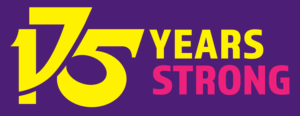The history of the EIS is very much entwined with the history of Scottish education (Appendix 1). At every stage of the latter’s development, the EIS has represented the professional voice of Scotland’s teachers. Much of this is detailed in the rich archive of EIS materials lodged in the National Archives of Scotland – a public resource, which can be consulted by any interested party.
From the 1872 Education (Scotland) Act, which made schooling compulsory for all children between the ages of five and 13, and the introduction of the Leaving Certificate in 1888, which established the annual examination diet (recently disrupted for the first time by the Covid pandemic), through to the introduction of comprehensive education in the 1970s and today’s debates around empowerment, curriculum and assessment, the EIS has not only been a witness but an active player in Scotland’s education system.
1847: Founding of the Educational Institute of Scotland “for the purpose of promoting sound learning and of advancing the interests of education in Scotland.”
1851: Queen Victoria granted a Royal Charter to the EIS. Membership at the time: over 1,800. Among the powers conferred on the EIS was the power to award a degree of “Fellow of the Institute”. The EIS remains the only trade union that awards degrees.
1900: Increasingly the EIS became involved in matters of pay and conditions of service.
1917: Other small teaching organisations joined the EIS.
1918: National minimum-salaries scale for teachers came into operation.
1939: National Joint Council formed. This was the first time that the EIS had been able to negotiate pay and conditions of service on a national level.
1971: The EIS became affiliated to the Scottish Trades Union Congress.
1976: A further-education section was established within the EIS.
1977: The EIS became affiliated to the Trades Union Congress.
1982: The Scottish Joint Negotiating Committee (SJNC) became the national forum for negotiations of pay and conditions of service.
1985: Lecturers in Central Institutions joined the EIS.
1987: The EIS set up a political fund, not for party political purposes, but to protect the ability of the EIS to campaign and to challenge politicians and political decisions.
1988: Lecturers in Colleges of Education joined the EIS.
1994: The AGM approved a new structure and constitution for the EIS and also the setting up of area offices for the first time.
1999: The Scottish Parliament was set up. This was a move long supported by the EIS.
2002: First partnership with a university (University of Paisley) for the delivery of CPD to teachers.
2003: First EIS learning representatives appointed. Members of the Scottish Further and Higher Education Association join the EIS and a new self governing association (EIS-FELA) is born.
2005: First chartered teachers emerge from the partnership with the University of Paisley.
2010: Introduction of new Curriculum for Excellence.
2013: Launch of ‘Make time for teaching’ campaign, after EIS survey highlights a heavy workload and lack of support from Scottish Government and the SQA in relation to the implementation of Curriculum for Excellence.
2015: First EIS equality reps appointed, taking forward the equality agenda as a whole in schools and further-and higher education establishments.
2016: EIS victory in fight against excessive workload and assessment with removal of mandatory SQA unit assessments.
2017: Success of EIS-FELA pay campaign.
2018: Launch of ‘Value education, value teachers campaign.
2019: Success of EIS pay campaign secures a 13.5 per cent pay uplift for Scotland’s teachers.
2020: EIS ‘Protect Education’ campaign to protect teachers, lecturers, pupils, students and
education provision during the Covid pandemic.
2022: The EIS celebrates its 175th anniversary.
ACKNOWLEDGEMENTS:
Research, interviews and substantive writing:
Adi Bloom
Design and lay-out:
Stuart Cunningham and Paul Benzie
Additional writing and research:
EIS Comms Team and assorted staff members
Printed by:
Ivanhoe Caledonian, Seafield Edinburgh
Photography:
Graham Edwards, Mark Jackson, Elaine Livingston, Toby Long, Ian Marshall, Alan McCredie, Alan Richardson, Graham Riddell, Lenny Smith, Johnstone Syer, Alan Wylie


Thanks to the many former activists and officers who gave of their time to be interviewed and taken a stroll down memory lane. And of course a very special thanks to the EIS members who created this history through their activism and commitment to the cause of Scottish Education.
© 2022 The Educational Institute of Scotland